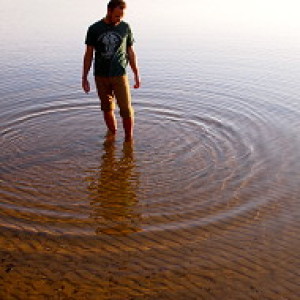Monsoon rains and flooded rice fields
"It was along the path between the lower and upper falls, and about the margin of the upper pool, that I found most insects. The large semi-transparent butterfly, Idea tondana, flew lazily along by dozens, and it was here that I at length obtained an insect which I had hoped but hardly expected to meet with the magnificent Papilio androcles, one of the largest and rarest known swallow-tailed butterflies."
~ Alfred Russel Wallace 1857. Maros District. Sulawesi
So I here I am perched on the back of my young guide's motorbike thinking how inconvenient the monsoon season is as we speed right into a storm heading towards Maros...
Swerving through the mad outgoing city traffic in torrential monsoon rain was half the adventure. We wore ponchos but it made little difference. We both got completely soaked to the bone. Instead of dwelling on the ample near-death experiences of the journey though, I tried to view it as a sort of giant car wash ride! It helped.
Eventually leaving the main highway, we passed long, sweeping rice fields similar to Wallace?s descriptions so long ago in this region. In the distance tall, craggy karst ridges rise up above the plain. Below, the small figures of families in straw hats were everywhere working the rice fields. Maybe things haven't changed so much here as when Wallace visited in 1857. Back then Wallace stayed here collecting specimens and made quite an impression on the local people. In The Malay Archipelago he writes:
"Not a single person in the village could speak more than a few words of Malay, and hardly any of the people appeared to have seen a European before. One most disagreeable result of this was that I excited terror alike in man and beast. Wherever I went, dogs barked, children screamed, and women ran away, and men stared as though I were some strange and terrible cannibal monster."
Poor Wallace! When we finally arrived in Maros I stuck out awkwardly too. Instead of fleeing in terror though, the locals tried to cajole me over to their snack stands and souvenir shops. I'm a bule, a foreigner after all. I must want to BUY things. As it turns out Maros is a local weekend getaway spot from Makassar these days. Snack shops, little resturants, and kitschy butterfly souvenir stands ring a large parking lot near the famous falls. Admission is a few dollar apiece. Despite the fact that the smack of rain on the pavement is deafening and the river looks near flash flood stages, there are people everywhere!
The water was roaring like Niagra. It was a little terrifying to look at, especially from the old concrete stairs beside the falls - they looked like they could be swept away at any moment. From the top a walkway followed the river through dripping green jungle wedged in a karst canyon. It all looks as Wallace described- just replace sunbeams and butterflies with mud puddles and discarded trash. The walkway ends at a cave that plunge deep into the canyon walls.
It would be nice to explore this area on a clear day and search for the wonderful butterflies that Wallace made this place famous for long ago. Unfortunately the only butterflies we saw were boxes of dead specimens lining the park entrance - souvenirs for tourists. Leaving behind the falls of Maros, a huge blue and black butterfly about three stories tall straddles the entrance road. Behind this an equally large and scary looking concrete monkey statue looms with gorilla-like mopey arms.
I wonder - would Wallace be pleased at the attention he inspired, or rolling in his grave?
- 0
- 0
- Olympus E-P1
- f/9.0
- 42mm
- 200

Comments
Sign in or get an account to comment.


